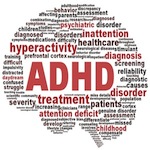Dr Walsh’s work with Attention Deficit and Hyperactivity Disorders is profound. He outlines the clear differences between individuals with ADD and ADHD and the need for specific functional support in these individuals based on his theory of individual biotypes. Once again the outcomes are life changing!
Biotypes, for definition purposes, is a group of organisms with identical or very similar genetic profiling. The term is often used to differentiate bacteria, so it is interesting to see in the context of mental health conditions. Biotyping, in the context of clinical mental health is critical as it allows the physician to individualize treatment based on different subtypes of a health condition using genetic land laboratory based evaluations.
As most physicians inherently know, using the current “Evidence Based” (or sometimes referred to as the “Evidence Biased”) approach to medicine, not everyone fits into the box. The reason why bias is a part of this approach is the clear concerns seen within current research techniques and studies that attempt to fit patients into specific outcome measures based on the medication that they are selling. Similarly, physicians, medical doctors and naturopathic doctors alike, hold specific bias’ based on what they “like”, or think works the best. This further creates confusion and frustration for both the patient and the doctor when a specific treatment fails to work.
Having switched my practice years ago, away from this model to a more objective approach, I can speak confidently to the challenges that “Evidence Based” approaches create. I can also reinforce the benefits of a functional medicine approach to all health conditions. Although functional medicine takes more time, the outcomes are much more permanent based on objective and individualized treatments.
ADHD – Biotypes
- Predominantly inattentive – commonly deficient in folic acid, vitamin B12, zinc and choline
- Predominantly impulsive and hyperactive – Commonly involve copper overload and zinc deficiency.
- Combined hyperactivity/Impulsive and Inattentive – 68% have seriously elevated Cu and Zn ratio
Specific findings
Elevated Copper/Zinc Ratio – 75.4% of tested subjects
- Treatment; MT Promotion, zinc, glutathione, selenium, cysteine pyridoxine, ascorbic acid and vitamin E
Overmethylation – 29.5% of test subjects; depressed histamine (overmethylation); elevated methyl/folate ratio and elevated dopamine and norepinephrine;
- Treatment: folic acid, vitamin B3 and B12
Undermethylation – 37.7% of test subjects; elevated blood histamine, depressed methyl/folate ratio,; associated metal health conditions; depression, seasonal allergies, OCD, high libido, low serotonin.
- Treatment: methionine, calcium, magnesium, and vitamin B6, C and D
Pyrrole Disorder – 32.9% of test subjects;
- Treatment: Severe deficiencies of zinc and pyridoxine, vitamin C and Vitamin E
Heavy Metal Overload – Exhibited by 17.9%;
- Treatment: calcium, zinc, manganese, pyridoxine, selenium and other antioxidants
Dysglycemia – 30.4% exhibit a tendency to usually low blood sugar.
- Treatment: Chromium picolinate and manganese.
Malabsorption; 15.5% exhibit malabsorption with generalized low vitamin, mineral and amino acid levels.
Summary
Most clients battling attention issues will fit into more than one category, which makes simply treating the condition challenging and assessment critical. These different subcategories of ADD and ADHD are actually fairly easy to assess, although not all of the tests are covered by healthcare and need to be run through private laboratories. It is important to note however that once assessment is complete outcomes are very positive and maintenance can be much less confusing to continue. It is also important to mention that the sooner a person is assessed and treated properly, the less lasting damage neurochemical imbalances can have on the brain.
You might also consider online counselling at https://www.betterhelp.com/adv
